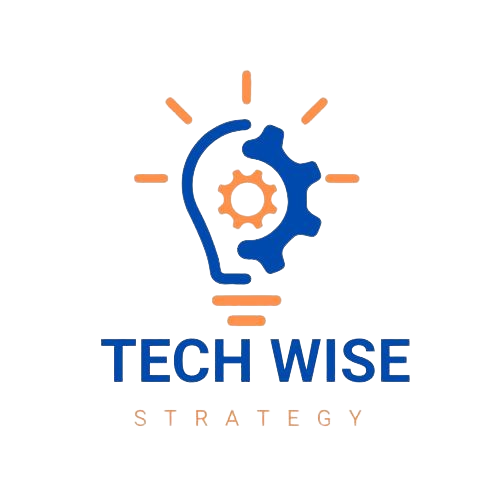In the fast-paced realm of technology, having a solid strategy is akin to possessing a map in uncharted territory. Technology strategy is the blueprint that guides organizations in leveraging technological innovations to achieve their goals effectively. But what exactly is a framework for technology strategy, and why is it indispensable in today’s digital landscape?
What is a Framework for Technology Strategy?
A framework for technology strategy is a structured approach that delineates how organizations can align their technological endeavors with their overarching objectives.
It provides a systematic methodology for assessing current technological capabilities, identifying opportunities for improvement, and charting a course for future technological initiatives. Essentially, it serves as a roadmap that steers organizations towards leveraging technology to gain a competitive edge and drive sustainable growth.
Why Is A Technology Strategy Necessary?
In the dynamic landscape of technology, change is constant, and disruptions are the norm. Without a coherent technology strategy framework in place, organizations risk emerging trends catching them off guard or losing sight of their long-term objectives.
A robust framework enables organizations to anticipate technological shifts, adapt proactively, and capitalize on opportunities as they arise. It fosters agility, resilience, and innovation, essential qualities for staying ahead in today’s fiercely competitive marketplace.
What are the Benefits of Having a Technology Strategy Framework?
Strategic Alignment: A well-defined technology strategy framework ensures that technological initiatives are closely aligned with the overall business strategy, fostering synergy and coherence across the organization.
Risk Mitigation: By systematically assessing risks and opportunities, a technology strategy framework enables organizations to mitigate potential pitfalls and capitalize on emerging trends, minimizing uncertainty and maximizing ROI.
Resource Optimization: By providing a structured approach to resource allocation and prioritization, a technology strategy framework helps organizations optimize their investments in technology, ensuring that resources are allocated efficiently to projects with the highest strategic value.
Innovation Catalyst: A technology strategy fosters a culture of innovation by encouraging experimentation, collaboration, and continuous improvement, driving sustainable growth and differentiation in the marketplace.
Key Elements of a Technology Strategy
- Vision and Objectives: Clearly define the overarching vision and strategic objectives that technology initiatives aim to support, ensuring alignment with the organization’s mission and values.
- Environmental Analysis: Conduct a comprehensive analysis of the technological landscape, including market trends, competitor activities, and regulatory changes, to identify opportunities and threats.
- Capability Assessment: Evaluate the organization’s current technological capabilities, including infrastructure, talent, and processes, to identify strengths and areas for improvement.
- Strategic Prioritization: Prioritize technological initiatives based on their alignment with strategic objectives, potential impact, and feasibility, ensuring that resources are allocated to projects with the highest strategic value.
- Implementation Plan: Develop a detailed implementation plan that outlines the steps, timelines, and responsibilities for executing the technology strategy, ensuring accountability and transparency throughout the process.
Also Read: Mıllıeyt: What Is It? Revealing Its Impact and Development
How to Create and Implement a Technology Strategy Framework?
- Define Clear Goals: Start by defining clear and measurable goals that the technology strategy aims to achieve, ensuring alignment with the organization’s overall mission and objectives.
- Engage Stakeholders: Involve key stakeholders from across the organization in the development of the technology strategy framework to ensure buy-in and alignment with business priorities.
- Conduct Thorough Analysis: Conduct a thorough analysis of the internal and external technological landscape to identify opportunities, threats, and areas for improvement.
- Develop Actionable Plan: Based on the analysis, develop an actionable plan that outlines specific initiatives, milestones, and timelines for achieving the strategic objectives outlined in the framework.
- Monitor and Adapt: Continuously monitor progress against the strategic objectives, reassessing the technological landscape and adjusting the strategy as needed to stay aligned with changing business needs and market dynamics.
FAQs
What role does innovation play in a strategy framework?
Innovation is the lifeblood of a technology strategy, driving differentiation, growth, and competitiveness in the marketplace. A robust framework fosters a culture of innovation by providing the structure and support necessary to nurture creativity and experimentation.
How does a technology strategy help mitigate risks?
By conducting a comprehensive analysis of the technological landscape and identifying potential risks and opportunities, a technology strategy framework enables organizations to proactively mitigate risks, anticipate challenges, and capitalize on emerging trends, minimizing uncertainty and maximizing ROI.
How can organizations ensure alignment between their technology strategy and overall business objectives?
Active engagement and collaboration between technology and business leaders, as well as regular communication and feedback loops, ensure that technological initiatives closely align with strategic priorities and evolving business needs, thereby ensuring alignment between technology strategy and overall business objectives.
What role does leadership play in the successful implementation of a technology strategy?
Leadership plays a critical role in championing the technology strategy, fostering a culture of innovation and collaboration, and providing the necessary resources and support to enable its successful implementation. Effective leadership inspires and motivates teams, fosters a sense of purpose and direction, and drives accountability and results.
Conclusion
In today’s hyper-competitive business landscape, technology has become a key enabler of growth, innovation, and differentiation. A well-defined technology strategy provides organizations with the roadmap they need to navigate this complex terrain, aligning technological initiatives with overarching business objectives, mitigating risks, and capitalizing on opportunities. Thanks for reading.

